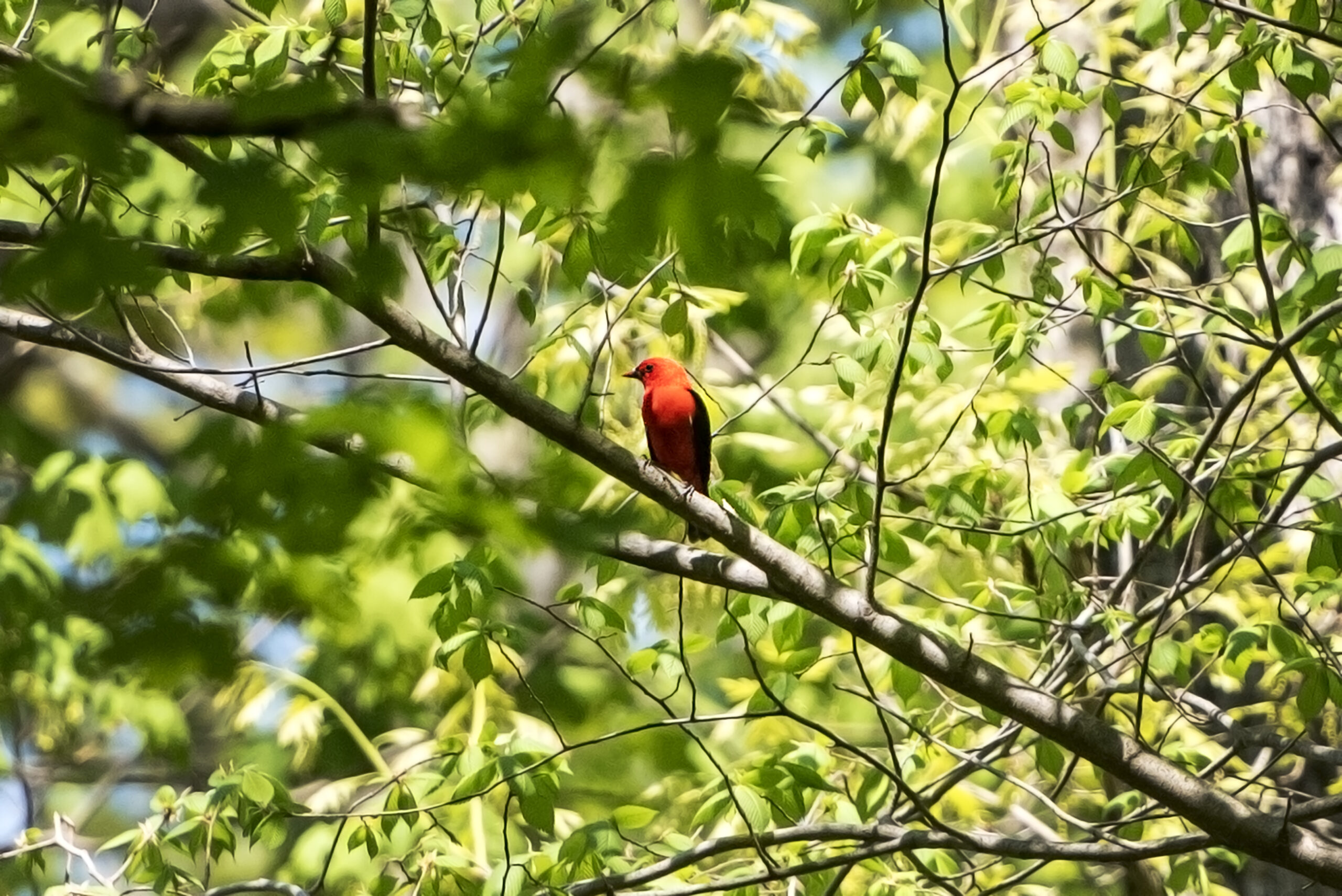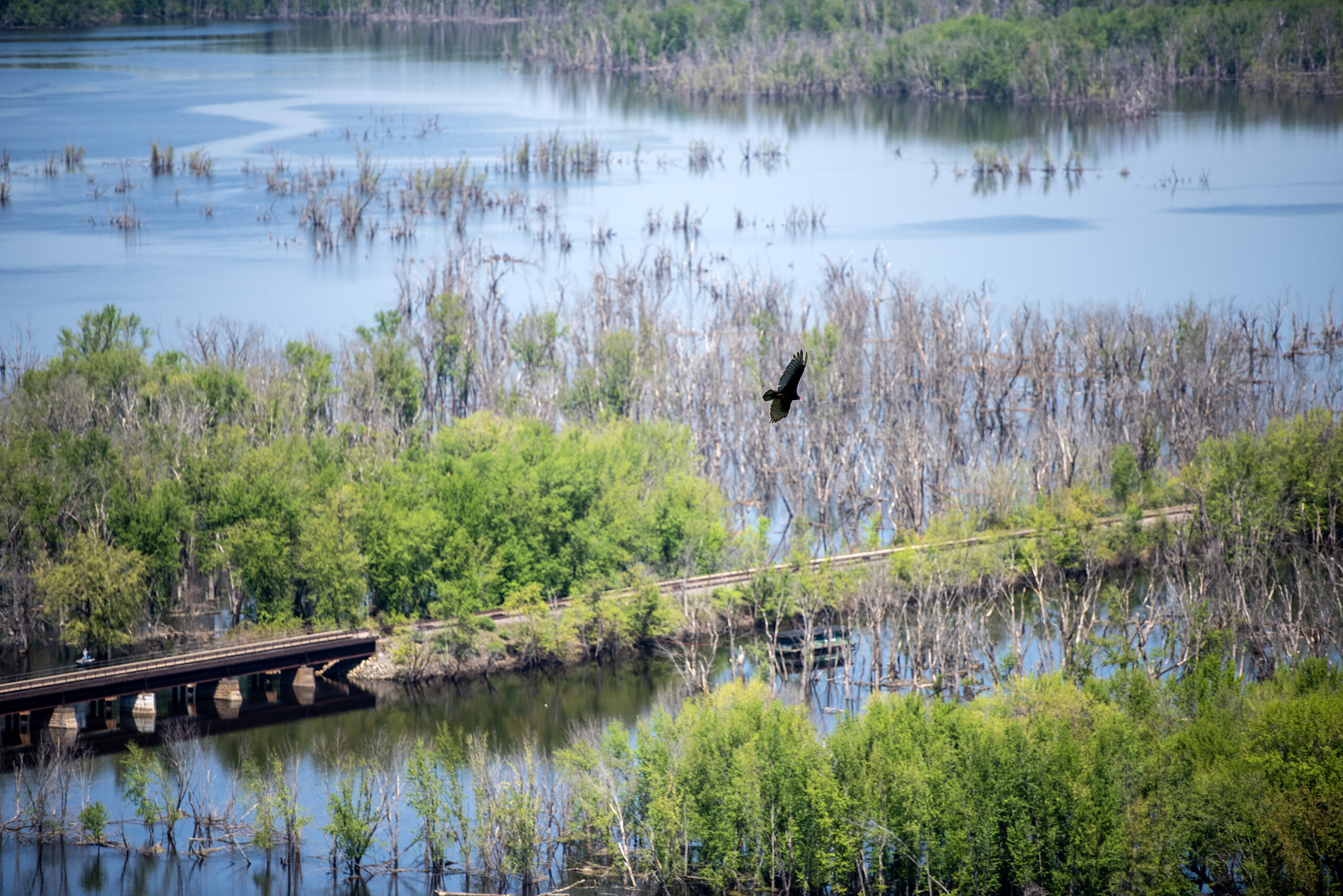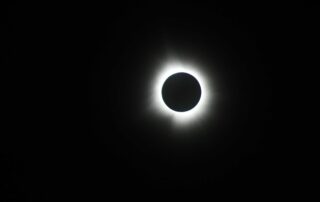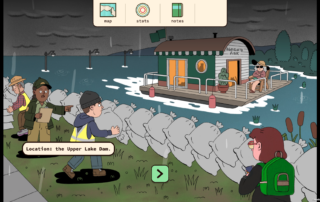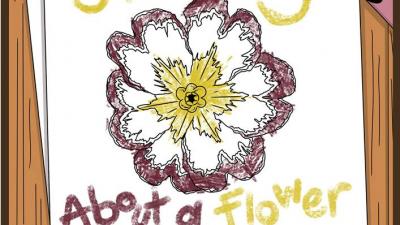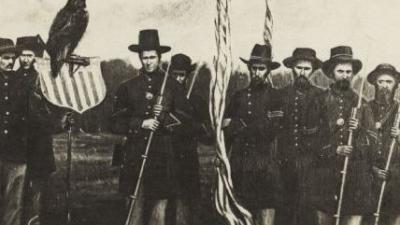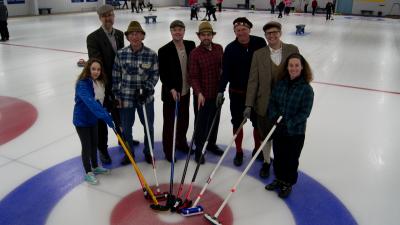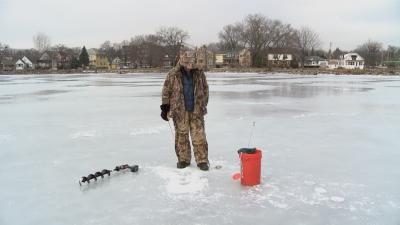There’s a certain point each spring in Wisconsin when it seems like winter is finally gone for good. We put our heavy coats away for the season, flowers begin to bloom and we start to hear songbirds welcoming warmer weather.
Early May is prime time for bird watchers like Kari Hagenow, a land steward and conservation project manager at The Nature Conservancy in Wisconsin. She’s an avid birder, who makes her way to Wyalusing State Park each year around this time, where the Wisconsin River meets the Mississippi River.
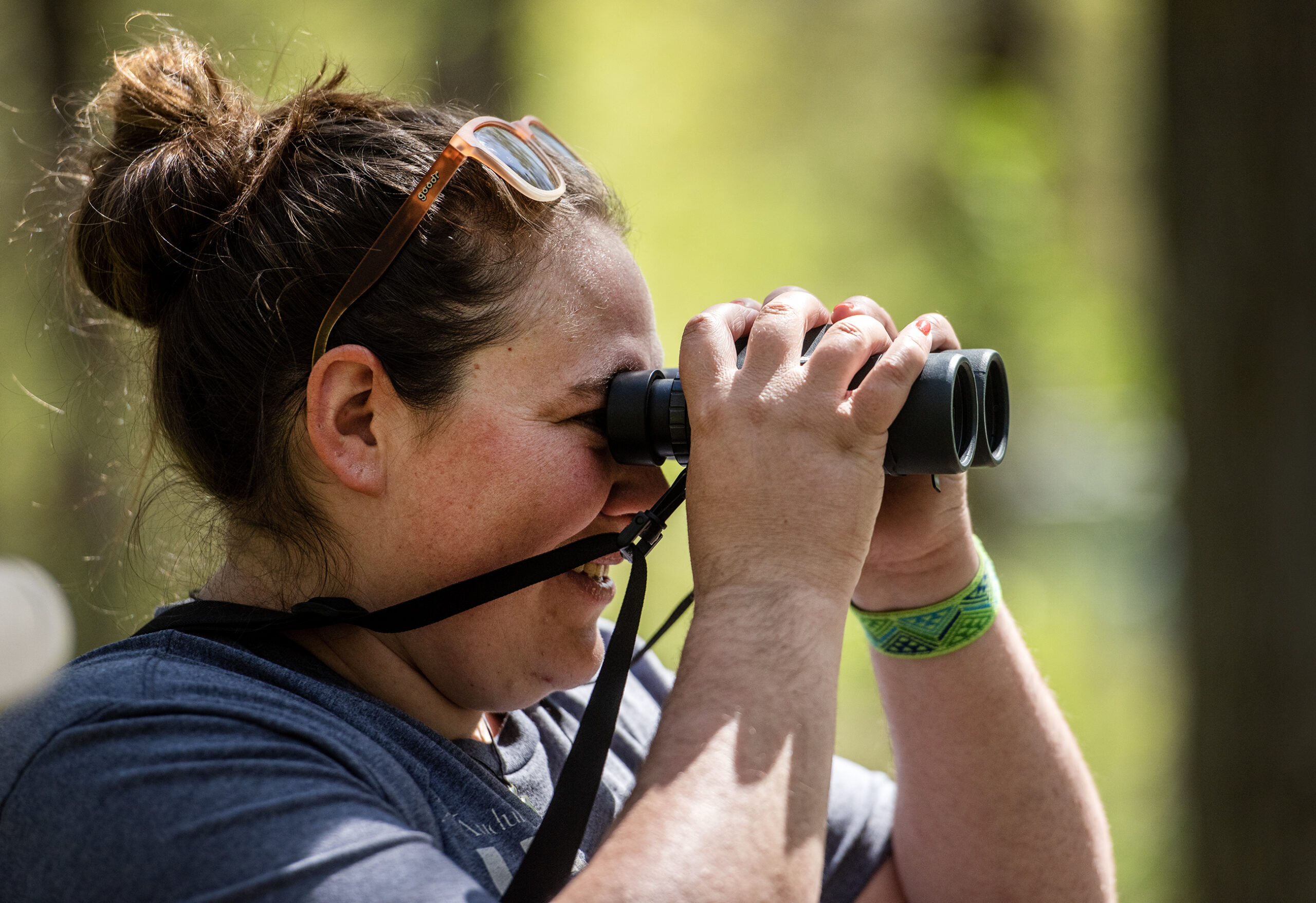
Kari Hagenow, a land steward and conservation project manager at The Nature Conservancy in Wisconsin, uses binoculars to find birds Wednesday, May 10, 2023, at Wyalusing State Park in Bagley, Wis. (Angela Major/WPR)
The campground, which sits on a bluff overlooking the rivers, is the perfect place to spot migratory songbirds as they make their way north from their winter homes, she said.
“These birds are migrating from as far as Central or South America, so thousands of miles,” she said. “They’re singing, they’re trying to attract mates, they’re looking for food.”
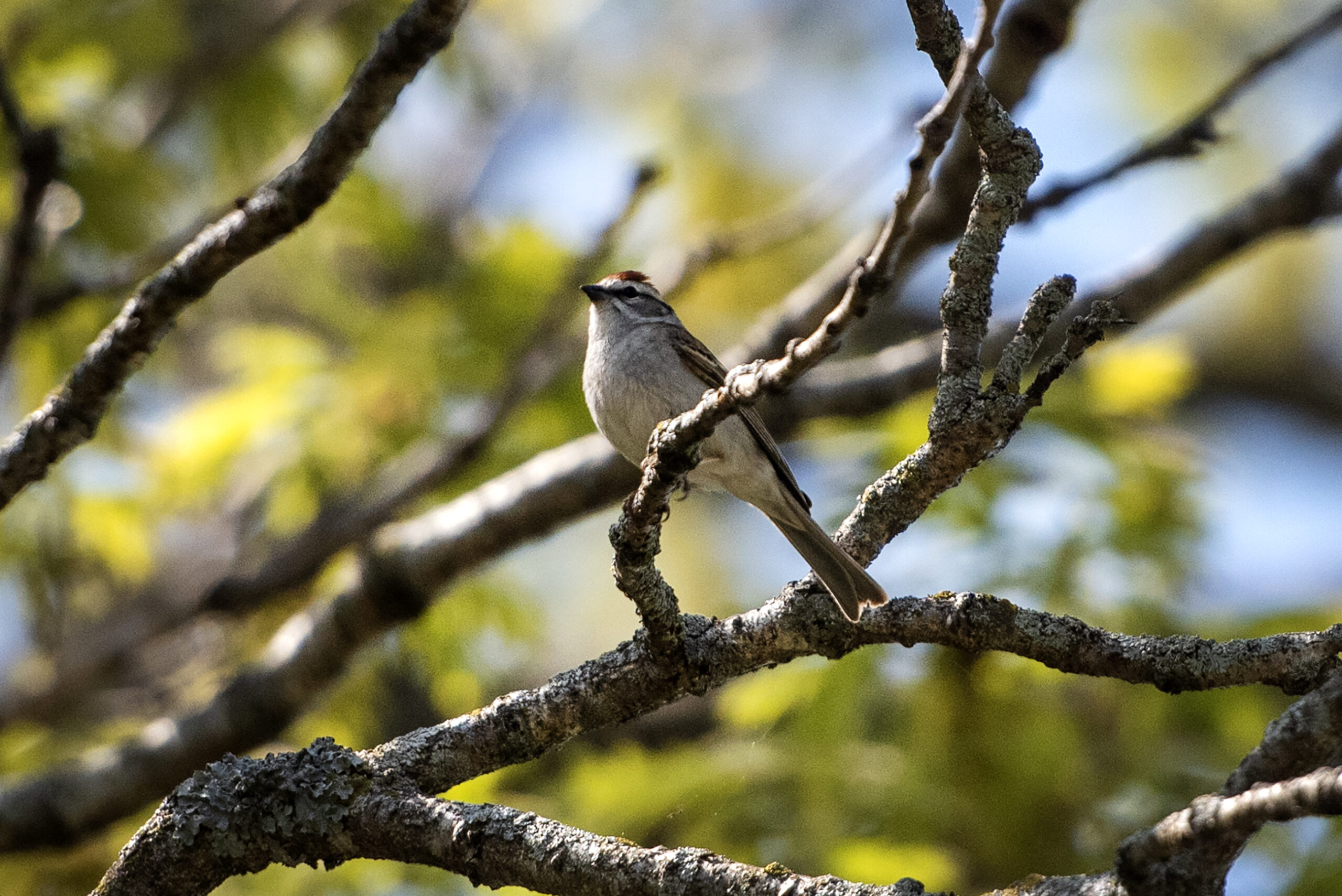
A bird sits in a tree Wednesday, May 10, 2023, at Wyalusing State Park in Bagley, Wis. (Angela Major/WPR)
Hagenow started birding in graduate school, when she took an ornithology class “just for fun.” Since then, she’s learned how to bird mostly by ear — carefully listening and using auditory clues to spot birds.
“Ninety percent of my birding now is listening to what’s going on around,” she said. “And then when you hear something that you’re like, ‘I don’t know what that is,’ you kind of seek that out, too.”
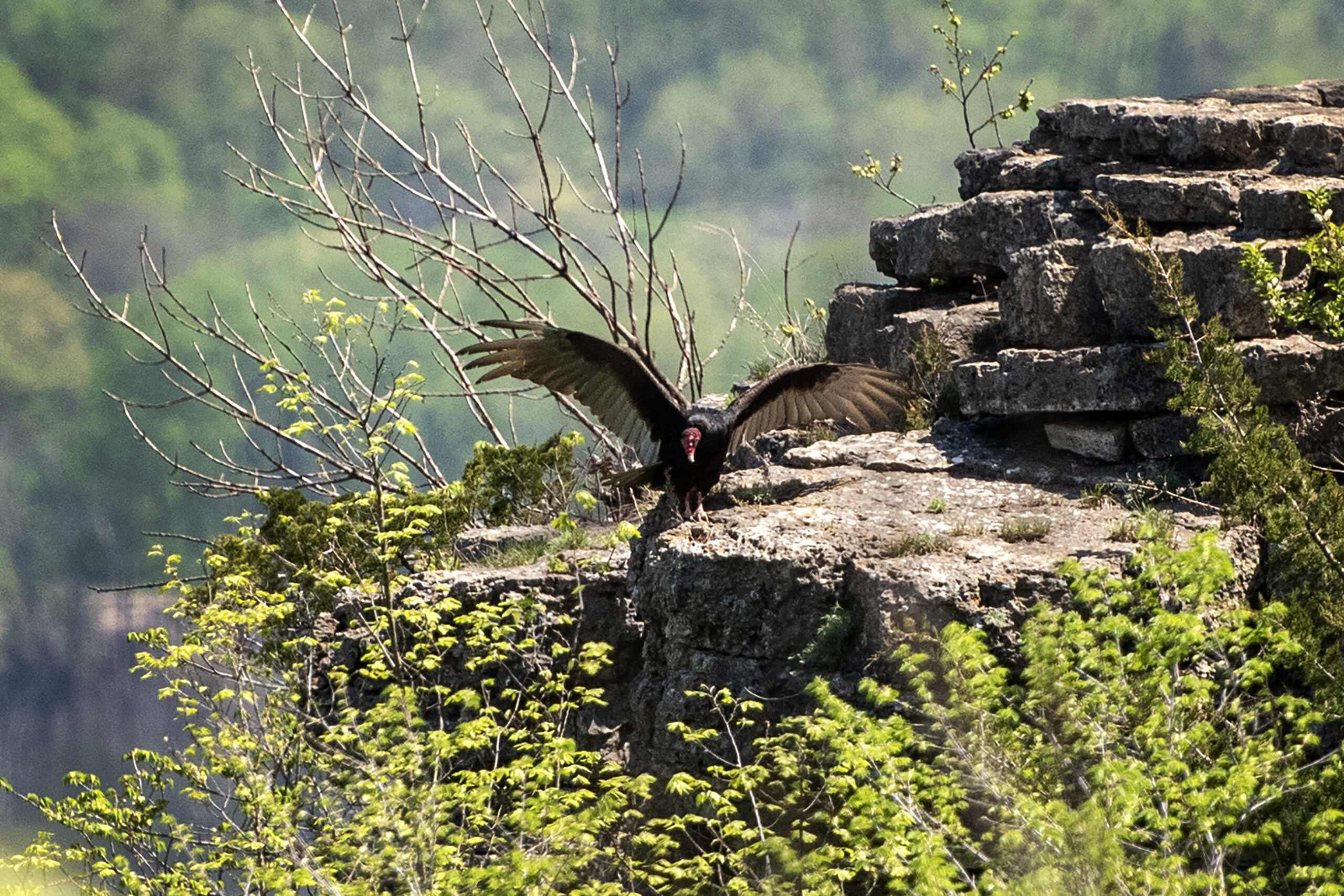
A turkey vulture spreads its wings Wednesday, May 10, 2023, at Wyalusing State Park in Bagley, Wis. (Angela Major/WPR)
Standing on the path under tree cover, she explained what she was hearing. A “bizz, buzz, buzz” song means a golden-winged warbler is near. “Zo-zee, zo-zo-zee,” is the black-throated green warbler.
Sometimes, the birds give you visual clues, too. A flash of color high up in the trees tipped Hagenow off to the presence of a scarlet tanager, one of her favorites.
The bird is so red that it’s “like someone flipped the lights on a cardinal,” Hagenow said. It was the first bird she ever identified on her own when she first started birding. For her, it was a “spark bird,” which is birder-speak for a bird that got you into the hobby. There’s also your “life list,” or an ongoing list of birds you’ve seen.
“A lot of people when they get into birding, they start keeping that list,” Hagenow said. “If you hear somebody say ‘I got a life bird,’ it means it’s the first time they’ve ever seen that bird anywhere.”
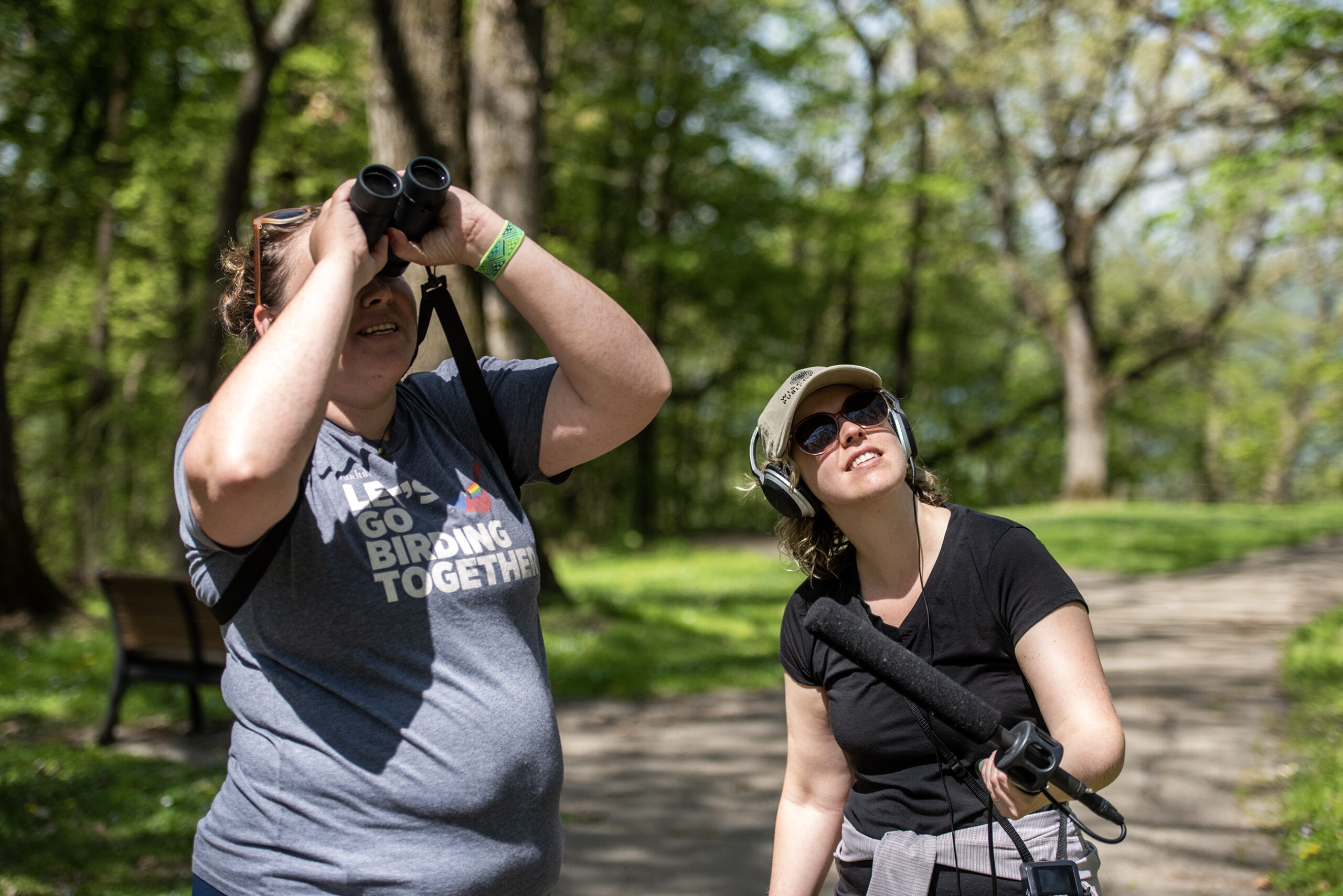
Kari Hagenow, left, a land steward and conservation project manager at The Nature Conservancy in Wisconsin, explains the birds she sees as Wisconsin Public Radio reporter Bridgit Bowden, right, records audio Wednesday, May 10, 2023, at Wyalusing State Park in Bagley, Wis. (Angela Major/WPR)
Hagenow pointed out different birds in the trees along the path — from the tiny ruby-crowned kinglet hopping around in the leaves to the enormous turkey vulture soaring over the bluff.
A neon-blue indigo bunting landed very briefly, then flew away before we could really get a good look at it. But that’s just the nature of birding, Hagenow said.
“You can know right where that bird is, and you just can’t get a good look at him,” she said. “It’s a game of patience. It’s kind of like hide and seek or a scavenger hunt, because you just never know what you might see.”
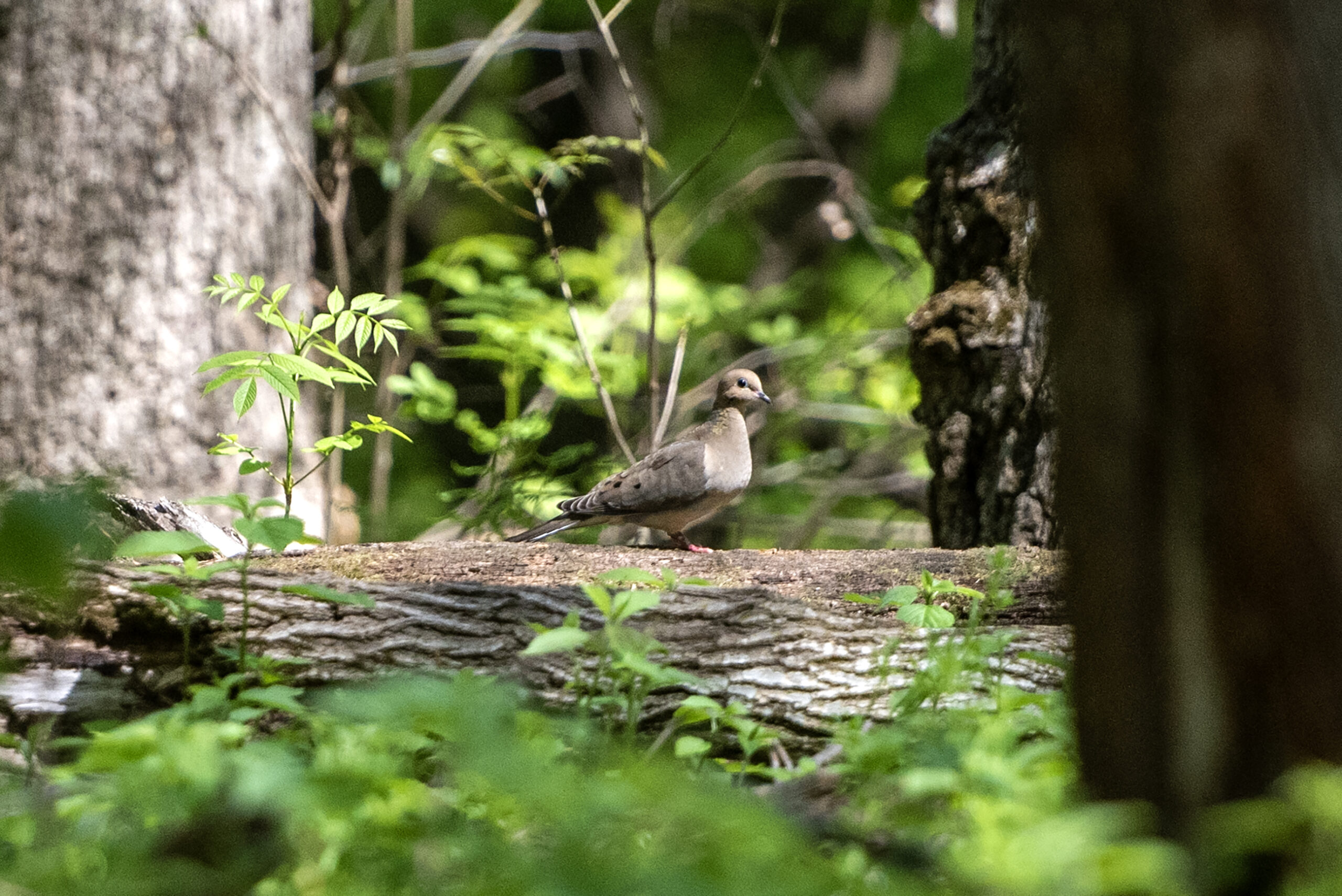
A mourning dove stands on a log Wednesday, May 10, 2023, at Wyalusing State Park in Bagley, Wis. (Angela Major/WPR)
Wyalusing in May might be the prime time and place for birds, but that shouldn’t be a barrier, said Hagenow. Anyone, anytime, anywhere can enjoy looking for birds, she said.
“No matter where you are, you can find them,” she said. “You can go in New York City and find birds, or you can come here where it’s forested and you’re up on a bluff, and there are birds. The truth is, any time of year at any location, you can go out and look at birds and appreciate birds.”
